Salesforce acquired Slack in 2021 to enhance its CRM platform with better collaboration tools. Since then, it has introduced deeper integrations with Customer 360, Sales Cloud, Service Cloud, and Marketing Cloud.
Businesses can now use pre-built solutions like Digital Deal Rooms, Daily Briefs, Service Swarming, and Workflow Notifications. These tools keep teams connected and improve productivity.
Integrating Slack with Salesforce enables real-time updates, automated workflows, and seamless communication. Admins can sync leads, opportunities, and support cases directly into Slack channels.
Features like Expert Finder, Datorama Insights, and Tableau Notifications help teams make faster, data-driven decisions. This improves sales, marketing, and customer service performance.
Many companies have seen success with this integration. They report faster response times, better team coordination, and stronger customer engagement.
This article explores real-life examples, step-by-step integration guidance, and key benefits to help you get the most out of Salesforce and Slack.

How a Client Integrated Salesforce with Slack and Achieved 30% Faster Response Times
A data-selling company needed a faster way to manage customer inquiries and sales updates. Their teams relied on manual updates in Salesforce, causing delays in response times. To solve this, Rolustech integrated Slack with their Salesforce system, allowing real-time communication and automated updates.
With this integration, sales and support teams received instant Slack notifications about new leads, deal progress, and customer support cases. Instead of switching between platforms, teams accessed critical CRM data directly within Slack. This reduced delays and improved collaboration.
We also set up automated workflows to trigger actions in Salesforce through Slack. For example, when a customer request was logged, the support team received an immediate Slack alert. This ensured quick responses and better service quality.
As a result of this integration, the client achieved 30% faster response times and improved team efficiency. Their sales and customer support processes became more streamlined, leading to better engagement and higher productivity.
How Slack and Salesforce Complement Each Other
Real-Time Updates and Notifications
Slack integration with Salesforce ensures that teams receive real-time updates on leads, opportunities, and support cases. Automated alerts in Slack notify sales teams about deal progress, while support teams get instant updates on customer issues.
Salesforce Flow and Slack Workflow Builder enable businesses to automate notifications. For example, when a high-value lead enters the system, a notification can be sent to the sales channel, prompting immediate action.
Collaboration and Teamwork
Slack channels act as centralized spaces where teams can discuss deals, approvals, and customer support cases. Instead of relying on emails or switching between applications, employees can collaborate in real time.
Direct messaging within Slack allows for quick decision-making. Sales teams can communicate instantly, while customer service teams can escalate issues without delays.
Data-Driven Insights
AI-powered insights from Salesforce are accessible within Slack. Sales teams can receive reports, forecasts, and performance metrics directly in their Slack channels.
Customer service and marketing teams benefit from Tableau and Datorama insights. These notifications help teams track campaign performance, customer engagement, and support trends without leaving Slack.
What Salesforce Products Can Be Integrated with Slack
Salesforce provides seamless Slack integrations across its major products, enabling businesses to streamline operations and enhance collaboration. Here are some of the key products that integrate with Slack:
Sales Cloud
Sales teams can receive real-time notifications about new leads, deal progress, and pipeline updates directly in Slack. Collaboration on deals is simplified through dedicated Slack channels for each opportunity, ensuring quick decision-making and improved sales efficiency.
Service Cloud
Customer support teams can integrate Slack with Service Cloud to receive instant case updates and escalations. Features like Service Swarming allow agents to collaborate in Slack channels to resolve customer issues faster, reducing response times and improving customer satisfaction.
Marketing Cloud
Marketing teams can track campaign performance and engagement metrics with Slack notifications. Datorama Insights integration allows marketers to receive real-time analytics, helping them optimize strategies and improve ROI.
Revenue Cloud
Finance and sales teams can use Slack to stay informed about contract approvals, billing updates, and revenue forecasting. Automated notifications ensure that financial operations run smoothly without delays.
Customer 360
Slack serves as the communication hub for teams using Salesforce Customer 360. Employees from different departments can collaborate on customer insights, ensuring a unified approach to customer relationship management.
Einstein AI
AI-driven insights from Salesforce Einstein can be delivered directly into Slack channels. Sales and support teams receive predictive analytics, helping them make data-driven decisions and enhance overall performance.
By integrating these Salesforce products with Slack, businesses can enhance collaboration, improve efficiency, and streamline workflows across departments.
Steps to Integrate Salesforce with Slack
Integrating Salesforce with Slack is a straightforward process that enhances team communication and automates workflows. Follow these key steps to set up the integration:
1. Install the Salesforce App for Slack
Begin by installing the official Salesforce app from the Slack App Directory. This app enables communication between the two platforms and provides essential features like record linking and notifications.
2. Connect Salesforce and Slack
In Salesforce, navigate to AppExchange and install the Slack integration package. Once installed, authenticate your Slack workspace and grant the necessary permissions to allow data synchronization.
3. Configure Slack Notifications in Salesforce
Use Salesforce Flow or Process Builder to create automated notifications. Set up workflows that send Slack messages when specific actions occur, such as new leads, closed deals, or support case updates.
4. Enable Slack Actions in Salesforce
Activate Slack Actions to allow users to take actions directly from Slack. For example, sales reps can update deal statuses, assign tasks, or log activities without leaving Slack.
5. Set Up Slack Channels for Collaboration
Create dedicated Slack channels for sales, support, and marketing teams. Use these channels to automatically receive relevant Salesforce updates and collaborate in real time.
6. Test and Optimize the Integration
Run tests to ensure that notifications, workflows, and actions function correctly. Optimize settings based on team feedback to improve efficiency and usability.
By following these steps, businesses can seamlessly integrate Salesforce with Slack, improving communication, streamlining operations, and enhancing overall productivity.
Benefits of Integrating Salesforce with Slack

There are several benefits of integrating Salesforce with Slack. From faster response times to improved collaboration, let’s go through some of the main benefits that you’ll get from integrating Salesforce with Slack.
1. Faster Response Times
Real-time notifications ensure that teams can respond to leads, support cases, and customer inquiries instantly. This eliminates delays and significantly enhances customer satisfaction. By being able to effectively retain a majority of your customers.
2. Improved Collaboration
Slack’s instant messaging and channel-based discussions allow teams to work together more efficiently, reducing dependency on emails and improving decision-making speed. The better your inter-departmental communication, the more effectively teams will be able to collaborate.
3. Increased Productivity
With automated workflows and centralized information, employees spend less time switching between applications. This allows them to focus on high-value tasks and strategic initiatives.
4. Enhanced Data Visibility
Salesforce insights, reports, and dashboards can be delivered directly to Slack, providing teams with immediate access to important metrics and performance indicators.
5. Streamlined Workflows
Integrating Slack with Salesforce removes manual processes by automating updates and actions. This reduces errors, enhances efficiency, and ensures timely follow-ups on critical tasks.
By leveraging Slack and Salesforce together, businesses can create a more connected and efficient workplace, leading to better performance and stronger customer engagement.
Common Challenges and How to Overcome Them
While integrating Slack with Salesforce provides numerous benefits, businesses often face certain challenges during implementation. Addressing these hurdles proactively ensures a smooth integration process.
1. Data Syncing Issues
Challenge: Some organizations experience delays or inconsistencies when syncing Salesforce records with Slack. This can lead to outdated information being shared in Slack channels.
Solution: To ensure real-time data accuracy, configure Salesforce Flow or Process Builder to automate updates. Regularly test the sync process and troubleshoot any delays. Using middleware solutions like MuleSoft can also enhance data synchronization between the platforms.
2. Security and Compliance Concerns
Challenge: Sensitive customer and business data must be protected when shared across Slack and Salesforce. Without proper security measures, there’s a risk of unauthorized access.
Solution: Configure Salesforce’s permission settings to control what data is shared in Slack. Utilize Slack Enterprise Grid for advanced security controls and enable encryption. Implement role-based access controls (RBAC) to restrict sensitive data visibility.
3. Managing Notification Overload
Challenge: Too many Slack notifications from Salesforce can overwhelm users, reducing productivity instead of enhancing it.
Solution: Set up smart notification rules to ensure that only critical updates are sent to relevant teams. Use Slack Workflow Builder to filter unnecessary messages and categorize alerts by priority. Custom Slack commands can also be used to pull Salesforce data on demand instead of receiving continuous updates.
4. Adoption and Training Challenges
Challenge: Teams may struggle to adapt to the integration, leading to low engagement and underutilization of the features.
Solution: Provide hands-on training sessions and documentation to help employees understand how to use Slack-Salesforce workflows. Encourage adoption by demonstrating time-saving features, and assign internal champions to guide teams in using the integration effectively.
5. Integration Complexity
Challenge: Some businesses may require advanced automation, custom workflows, or third-party tools, making integration more complex.
Solution: Start with the basic integration setup and gradually implement more advanced features. Leverage Salesforce AppExchange apps and API-based custom integrations to tailor the integration to your business needs. Working with an experienced Salesforce consultant can also streamline the process.
By addressing these challenges with the right strategies, businesses can maximize the benefits of Salesforce and Slack integration, leading to improved efficiency and collaboration.
Success Stories: How Businesses Have Benefited from Salesforce-Slack Integration
1. Accelerating Sales Cycles in a Tech Firm
A leading SaaS company faced challenges in managing sales pipeline updates and communication between sales reps and leadership. They integrated Slack with Salesforce to receive real-time updates on deal progress and customer interactions.
Impact:
Sales managers received instant notifications when deals moved stages, allowing them to provide timely guidance.
Automated alerts ensured follow-ups on high-value leads, reducing the average sales cycle by 25%.
Leadership had better visibility into pipeline health through automated weekly Salesforce reports in Slack.
2. Enhancing Customer Support in an E-commerce Business
An online retailer struggled with slow response times due to disconnected support and fulfillment teams. By integrating Slack with Service Cloud, they set up Service Swarming, where agents collaborated in Slack to resolve customer cases faster.
Impact:
First-response times improved by 40% as cases were assigned and escalated instantly.
Customer satisfaction scores increased due to quicker resolutions and better internal communication.
AI-driven case prioritization helped agents focus on urgent issues.
3. Boosting Marketing Campaign Performance for a Global Brand
A multinational company needed real-time insights into marketing performance to optimize campaigns efficiently. Using Datorama Insights in Slack, they automated campaign analytics updates.
Impact:
Marketing teams received instant notifications on campaign engagement, allowing rapid adjustments.
Collaboration across global teams improved, reducing decision-making time on budget reallocations.
The company saw a 15% improvement in conversion rates due to faster campaign optimizations.
By leveraging Salesforce-Slack integration, these businesses streamlined operations, improved response times, and enhanced overall productivity.
Conclusion
Integrating Salesforce with Slack is a game-changer for businesses looking to improve collaboration, streamline workflows, and drive efficiency. By connecting CRM data with real-time communication, teams can respond faster to customer needs, close deals more effectively, and optimize marketing campaigns with data-driven insights.
Despite challenges like data syncing issues, security concerns, and notification overload, businesses can overcome these hurdles with smart automation, proper security measures, and structured training. The success stories of various companies highlight the transformative impact of this integration—accelerating sales cycles, enhancing customer service, and boosting marketing performance.
If you’re looking to integrate Salesforce with Slack for a seamless workflow, Rolustech can help. Our team specializes in custom Salesforce solutions tailored to your business needs. Contact us today to get started on your Salesforce-Slack integration journey!




